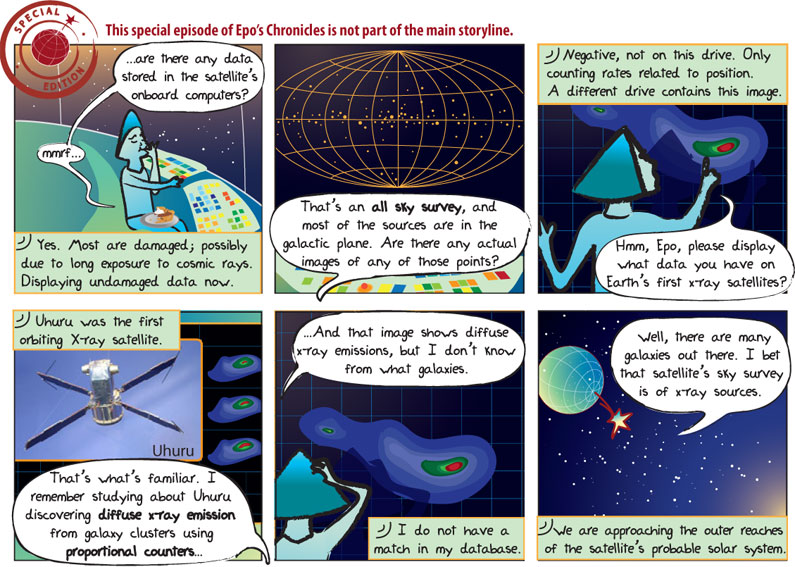
What does it mean?
All Sky Survey – A map created by taking images of every region of the sky, generally at a particular set of wavelengths, in order to detect and catalog the objects found.
Proportional counters – Detectors in which high-energy photons (such as X-rays) ionize gas, producing a number of charged particles that is proportional to the energy of the incoming photon. The photon’s energy can then be determined by reading out the resultant pulse of charge.
Diffuse X-ray Emission – A source of x-rays that is not a point source, but rather generating x-rays from a large region or area.
In human speak please!
Uhuru, also known as SAS-1 (for Small Astronomical Satellite 1), was the first dedicated x-ray satellite ever launched. Its name is the Swahili word for “freedom.” The satellite was launched on December 12, 1970 from San Marco, Kenya; it was of the seventh anniversary celebration of that country’s independence.
Uhuru did not take images of x-ray objects in the typical sense. Instead, it used proportional counters in order to create a map of x-ray sources in the sky. The data that Uhuru obtained revealed galaxy clusters as the second most luminous x-ray sources in the Universe and also as a source of diffuse x-ray emission. In addition, the Uhuru data allowed scientists to begin compiling a comprehensive catalog of the x-ray sources in the Universe.
Is that all?
The Uhuru Satellite – Goddard Space Flight Center’s page on Uhuru.
